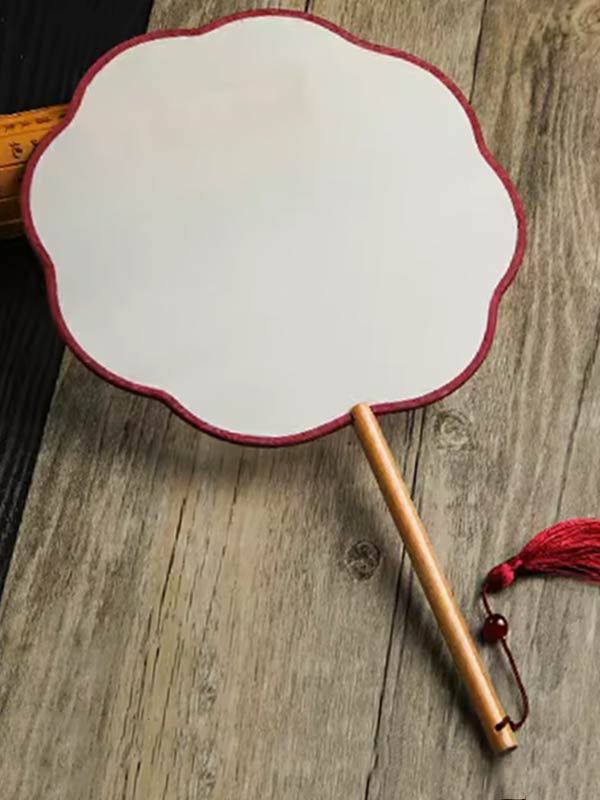Traditional Chinese silk fans - Red - Cloud Shape
Art and Elegance: Collection of Chinese Silk Fans:
Discover our exclusive collection of traditional Chinese silk fans, known as Tuan Shan, on our online store dedicated to the treasures of China. Each fan is a work of art, combining the elegance of silk and wood. Perfect for collectors, fans of Asian art or as unique gifts, our Tuan Shan fans offer a touch of elegance and Chinese culture. Explore our range to find the fan that speaks to your heart, and immerse yourself in the history and beauty of ancient China.
Our Chinese fans are the result of exceptional craftsmanship passed down through generations. Each piece is meticulously handcrafted with high-quality wood, providing a sturdy and elegant structure. The fabric that covers them is precisely selected, ensuring a perfect canvas for the artworks to come.
This is a reproduction of a traditional Chinese fan, formerly worn by ladies and sometimes by scholars, called Tuan Shan. It comes in various shapes, such as round, oval, square or hexagonal, and has a short wooden or bamboo handle. The styles of these fans are extremely varied. Made of silk, they often feature designs depicting ladies, flowers, or landscapes, imparting elegance and grace to those who held them.
The History of Fans in China:
Chinese fans, symbols of elegance and refined art, have a history that dates back several millennia. These delicate objects are not just practical accessories; they also embody the richness of Chinese culture throughout the ages.
Chinese Fans in Ancient Dynasties:
The use of fans in China dates back to the Han Dynasty (206 BCE - 220 CE), where they were often crafted from bird feathers or thin bamboo slats. Over the centuries, their design and use evolved, reflecting the artistic trends of each era.
Folding Fans and Hand Fans:
During the Tang (618-907) and Song (960-1279) dynasties, folding fans became popular, characterized by their accordion-fold structure. These fans were often used in the imperial court and adorned with intricate designs. During the Ming Dynasty (1368-1644), hand fans gained popularity, featuring poetic designs and nature scenes.
Silk and Paper Fans:
In subsequent dynasties, such as the Ming and Qing, Chinese fans saw a diversification of materials used. The use of silk for fans became common, adding a touch of luxury to these functional artworks. Paper fans, more affordable, became popular among all social classes.
Symbolism and Culture of Fans:
Chinese fans were often infused with cultural symbolism. Motifs such as flowers, birds, poems, and landscapes were chosen for their positive meanings, conveying messages of good fortune, prosperity, and beauty.
The Art of the Fan:
Fans also played an essential role in traditional Chinese arts, including dance, theater, and calligraphy. They were used to accentuate the grace of movements or to express emotions in artistic performances.
Thus, the history of fans in China is a testament to the artistic, cultural, and social evolution of the country through the centuries, with each fan becoming a window into the rich past of this civilization.













